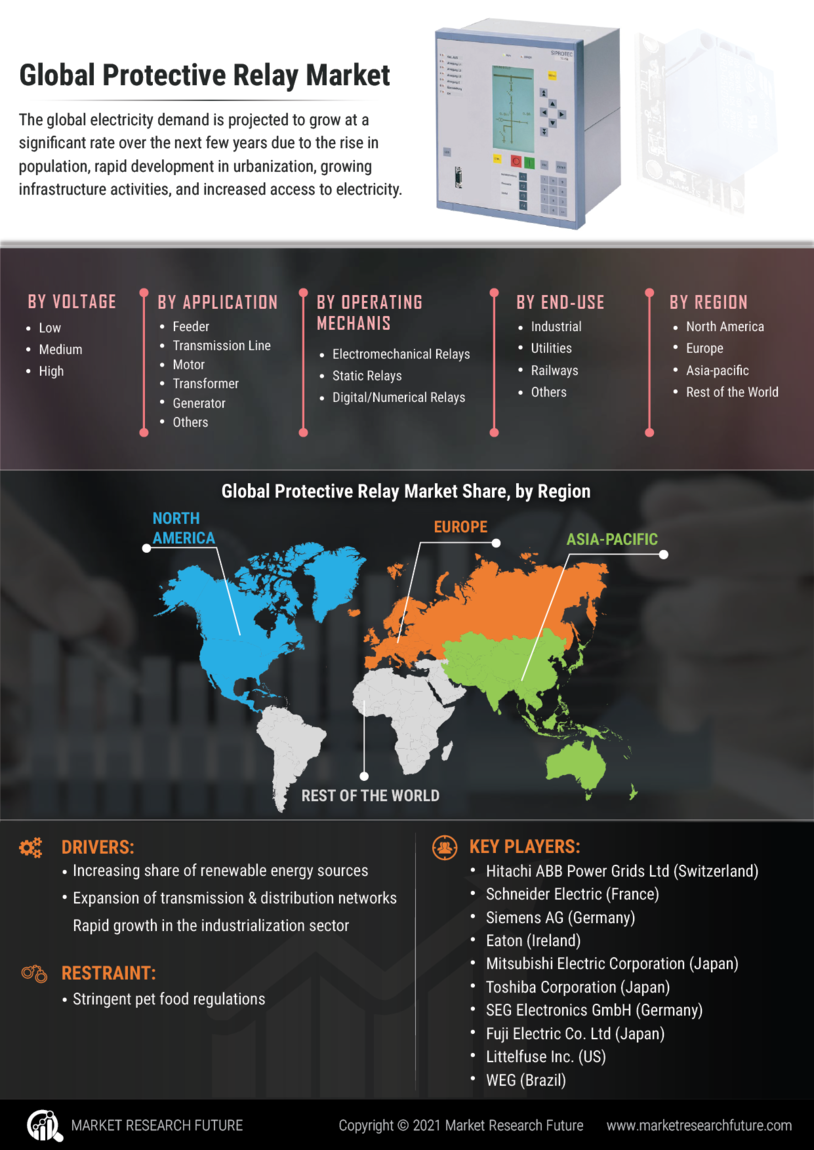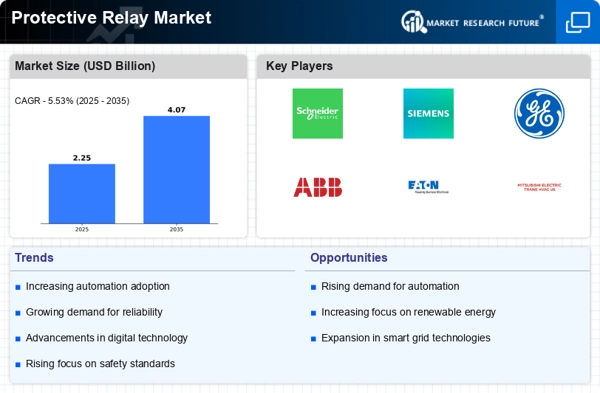Emphasis on Cybersecurity
In the current landscape, the Protective Relay Market is increasingly prioritizing cybersecurity measures. As electrical grids become more interconnected and reliant on digital technologies, the risk of cyber threats has escalated. Protective relays, which are critical components in safeguarding electrical systems, must now incorporate robust cybersecurity features to prevent unauthorized access and potential disruptions. Recent studies suggest that The Protective Relay Market for critical infrastructure is expected to exceed 30 billion dollars by 2026. This emphasis on cybersecurity is likely to drive innovation within the Protective Relay Market, as manufacturers develop solutions that not only protect against electrical faults but also secure against cyber threats. The integration of advanced encryption and authentication protocols in protective relays is becoming essential to ensure the integrity and reliability of electrical systems.
Integration of Smart Technologies
The Protective Relay Market is experiencing a notable shift towards the integration of smart technologies. This trend is driven by the increasing demand for automation and real-time monitoring in electrical systems. Smart relays, equipped with advanced communication capabilities, enable utilities and industries to enhance their operational efficiency. According to recent data, the adoption of smart grid technologies is projected to grow at a compound annual growth rate of approximately 20% over the next five years. This growth is likely to propel the Protective Relay Market, as smart relays play a crucial role in ensuring the reliability and safety of electrical networks. Furthermore, the integration of Internet of Things (IoT) devices with protective relays allows for improved data analytics and predictive maintenance, thereby reducing downtime and operational costs.
Focus on Renewable Energy Solutions
The Protective Relay Market is increasingly influenced by the global shift towards renewable energy solutions. As countries strive to meet sustainability goals, the integration of renewable energy sources such as solar and wind power is becoming more prevalent. This transition necessitates the use of advanced protective relays to manage the complexities associated with distributed energy resources. Market data indicates that the renewable energy sector is expected to grow significantly, with investments projected to reach over 2 trillion dollars by 2030. This growth is likely to drive demand for protective relays that can effectively safeguard renewable energy installations from faults and ensure grid stability. Consequently, the Protective Relay Market is poised to benefit from this trend, as innovative relay technologies are developed to accommodate the unique challenges posed by renewable energy integration.
Regulatory Compliance and Standards
The Protective Relay Market is significantly influenced by the need for regulatory compliance and adherence to industry standards. Governments and regulatory bodies are increasingly mandating stringent safety and performance standards for electrical systems. This regulatory environment compels utilities and industries to invest in advanced protective relays that meet these requirements. Market analysis indicates that compliance with standards such as IEC 60255 and IEEE 487 is becoming a prerequisite for operating in many regions. As a result, the demand for high-quality protective relays that ensure compliance is likely to drive growth in the Protective Relay Market. Furthermore, manufacturers are focusing on developing products that not only meet current standards but also anticipate future regulatory changes, thereby positioning themselves competitively in the market.
Rising Demand for Energy Efficiency
The Protective Relay Market is witnessing a rising demand for energy efficiency solutions. As energy costs continue to escalate, industries and utilities are increasingly seeking ways to optimize their energy consumption. Protective relays play a pivotal role in enhancing energy efficiency by enabling precise monitoring and control of electrical systems. Data suggests that The Protective Relay Market is projected to grow at a compound annual growth rate of around 8% over the next five years. This trend is likely to drive the adoption of advanced protective relays that facilitate energy savings and reduce operational costs. Moreover, the integration of energy management systems with protective relays is becoming more common, allowing for real-time data analysis and improved decision-making in energy usage. Consequently, the Protective Relay Market is expected to benefit from this growing emphasis on energy efficiency.


















Leave a Comment